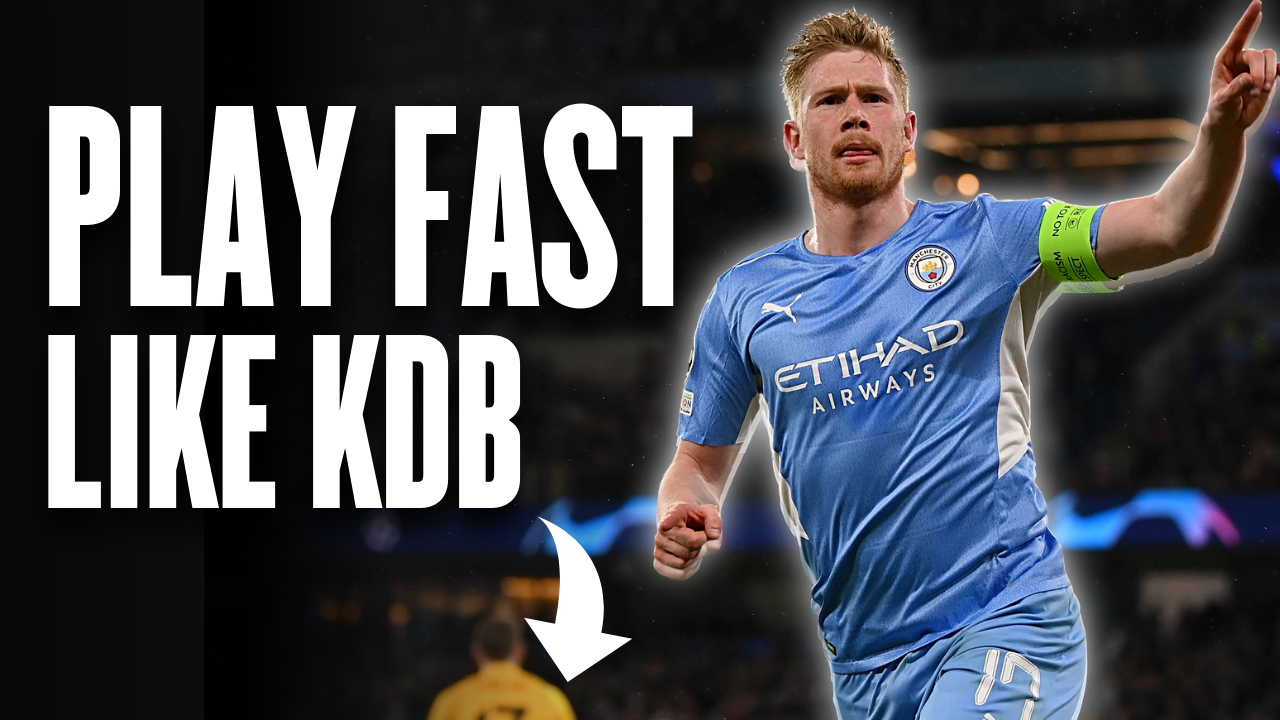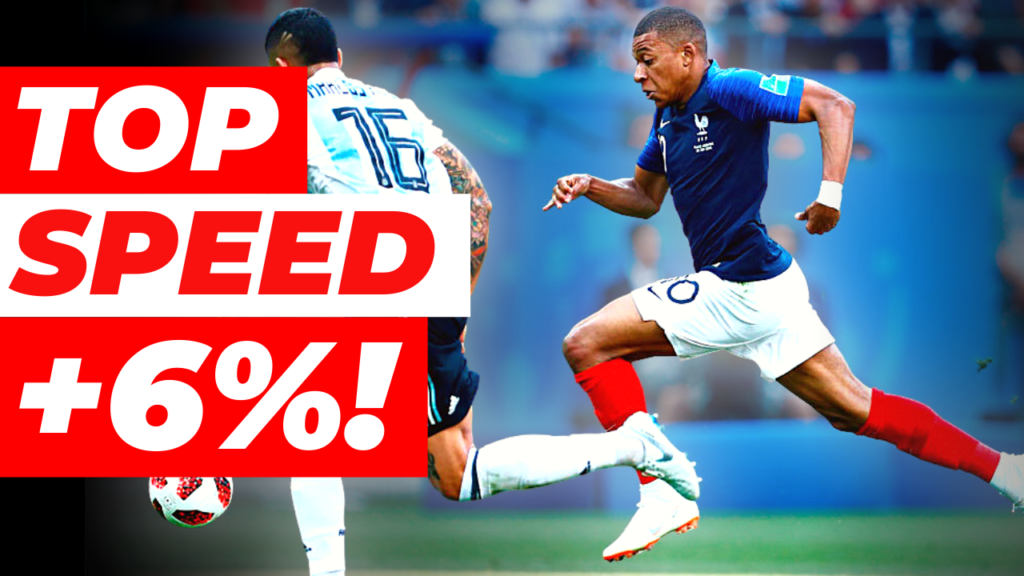
Every single football player wants to increase his/her speed, no matter what position we’re talking about because let’s face it, speed can be deadly.
The faster and the more powerful your actions are, the more chances you have to win the ball, get past defenders, cope with fast attackers, and generally do things that slow players aren’t capable of.
Of course, I am not telling you that speed is the end-all-be-all trait that will make you a successful player. However, it definitely is a part of your performance you simply can’t neglect.
Ivan’s 6% Improvement
That was exactly what I was talking about when I started working with one of our athletes this summer, Ivan.
WANNA WORK WITH US? CLICK HERE!
Now Ivan is just like you; an aspiring pro that is committed to his plan and willing to do anything it takes to achieve his vision.
This past off-season we worked together to address various weaknesses of his physical conditioning that were obvious after the assessments we ran him through.
One of his weak spots was his linear and multidirectional speed.
By just applying some basic principles of speed development and supplementing that with a gym program tailored to his needs we managed to increase his top speed from 26.6km/h to 28.4km/h in only a matter of weeks. Needless to say that our guy is still crushing it and progressing in-season.
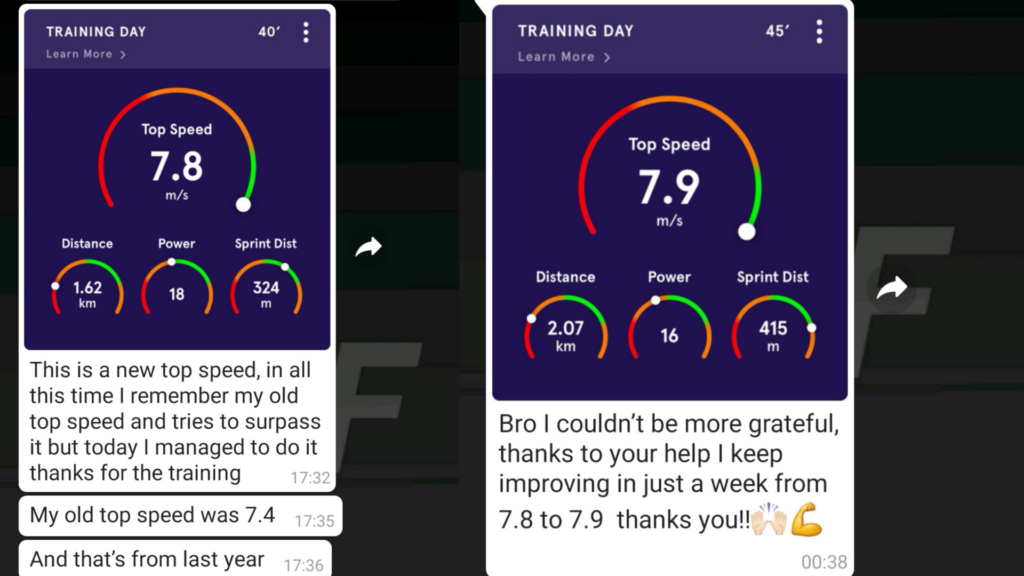
The Beauty Of Marginal Gains
Now I’m obviously not here to brag about that 6% improvement.
I’m just writing this article to help you realize that speed development, especially at a sub-elite level, shouldn’t be that confusing, and that marginal gains, even smaller than that 6% improvement, are something that can propel you to the next levels of your career.
You see, there are many quote-on-quote performance specialists out there who propose a variety of methodologies that are reminding me of black magic.
However, as Harrington Emerson once quoted,

*As an affiliate, I'm earning from qualifying purchases without any extra charges being placed on you.
“There might be a billion and some methods, but principles are few. The man who grasps principles can successfully select his own methods. The man who tries methods, ignoring principles, is sure to have trouble”
Harrington Emerson
So yeah, there is no magic training method or exercise that can make every player faster by itself.
Having said that, there are certain training principles that are proven to be successful through years and years of scientific research that we simply cannot neglect.
#1 Speed Biomechanics – Are You A Chicken Or A Cheetah?
The first one I’d like to go over is the efficiency of your biomechanics. In other words, the quality of your movement while you’re sprinting in a straight line, cutting, turning, accelerating, or decelerating.
Energy-efficient movement is a prerequisite when it comes to optimizing any parameter of your physical performance.
So yeah, better speed mechanics can help you run faster, preserve more energy, and reduce the risk for injury.
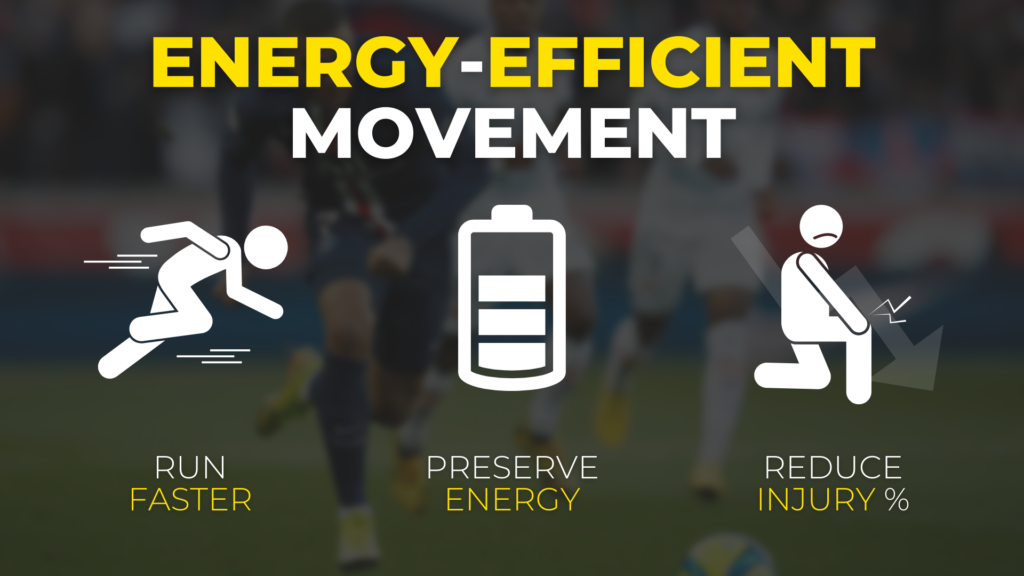
But does perfect movement really exist? If we’re talking about a 100m sprinter, I’d say to some extent, yes. However, if we’re talking about football, then no, perfect movement mechanics don’t exist.
A football game is full of chaos and unpredictability so we can’t turn players into robots.
What we can do, however, is engrain some more energy-efficient movement mechanics so that you can make better use of all the forces your body is able to exert and absorb, no matter what direction you’re moving.
This can be done in a series of ways using corrective and rhythmic exercises like hops and skips, or even sprint-specific isometrics and locomotive plyometrics.
All of the tools mentioned can be used to engrain better movement.
The tricky part here, however, is being aware of what’s right and wrong when it comes to how to perform those exercises, as well as making proper exercise selection and dosing based on what your movement deficits are. And that’s when a performance coach could be of great use.

*As an affiliate, I'm earning from qualifying purchases without any extra charges being placed on you.
WANNA WORK WITH A PERFORMANCE COACH? GET IN TOUCH WITH US NOW!
Are You Sprinting (Properly)?
The next thing I’d like to highlight as a common mistake is players completely ditching sprints as a training tool.
I mean how the hell are you supposed to increase your speed if you’re not actually putting your neuromuscular system under that exact stress?
Now there’s a lot of ways you can start implementing sprints into your regimen like resisted sprints, hill sprints, sled pushes, multidirectional sprints, or even just linear sprints from various starts.
What you’re gonna use is heavily dependent on the context of your situation.
However, the main point I want you to keep from this is that you need to be hitting those max efforts and top velocities frequently during a week of training if you wanna see your speed rise over time.
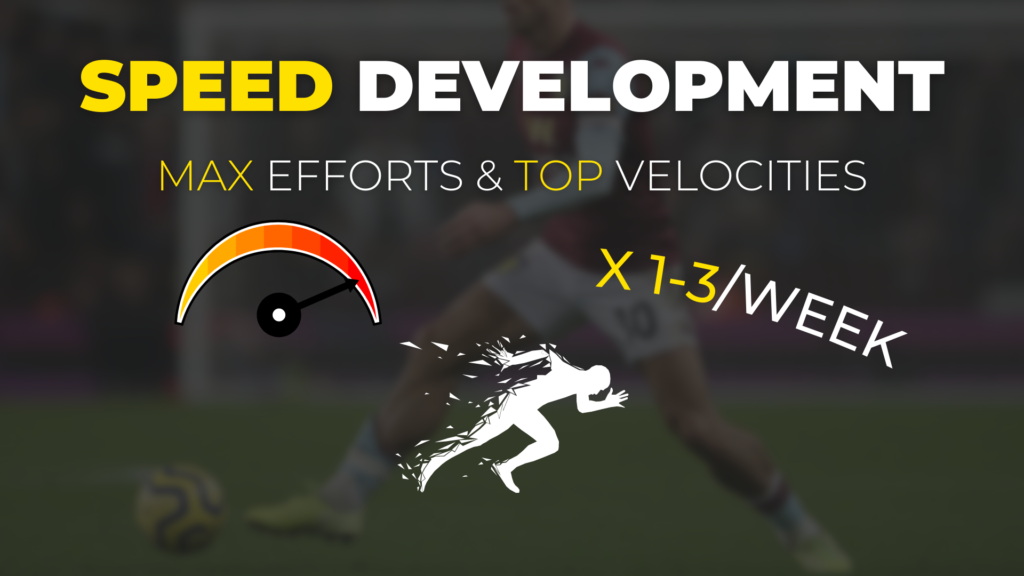
Having said that, every time you perform speed training I want each effort to be maximal and with fluid movement. Take adequate rest in between efforts and perform each action with high intent!
Ditch The “Traditional Route”
And the last thing I wanted to talk about is related to how you work out.
You see, most coaches grew up and got educated by people who used to believe that a general strength-focused workout program or hypertrophy work sustained over a long time would drive great results in terms of strength, speed, AND power.
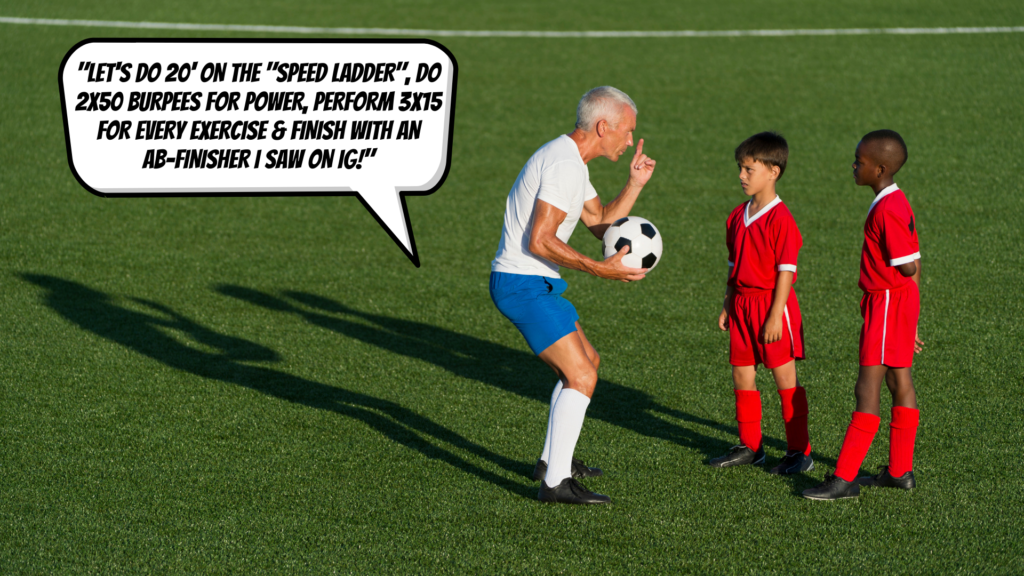
The truth, however, is far far away from that.
In the modern game, where speed and power are two heavily dominant characteristics, it makes sense to say that general strength and hypertrophy work can only get you so far.

All it really takes is just opening your eyes up to a greater quote-on-quote toolbox and understanding your individual needs. A great point to start expanding that toolbox is plyometrics and ballistics.
The transfer these two can have to athletic performance is unreal and evident in the vast majority of research articles that have studied their impact on various KPIs of football performance. [1] [2]
Putting your neuromuscular system through maximal efforts with a fast stretch-shortening cycle and a rapid motor unit recruitment can only be beneficial to performance IF of course, you use them properly.
And that’s where strength & conditioning principles come into play to guide the training process and drive the best possible adaptations.
DIDN’T UNDERSTAND SOMETHING? WATCH THE VIDEO TO GAIN CLARITY!
Liked this article? Make sure to SHARE it with your teammates and coaches! Also, don’t forget to follow us on INSTAGRAM where we post daily content to help you #levelUP your performance!
REFERENCES
[1] Beato M, Bianchi M, Coratella G, Merlini M, Drust B. Effects of Plyometric and Directional Training on Speed and Jump Performance in Elite Youth Soccer Players. J Strength Cond Res. 2018 Feb;32(2):289-296. doi: 10.1519/JSC.0000000000002371. PMID: 29176387.
[2] Loturco I, Kobal R, Kitamura K, Cal Abad CC, Faust B, Almeida L, Pereira LA. Mixed Training Methods: Effects of Combining Resisted Sprints or Plyometrics with Optimum Power Loads on Sprint and Agility Performance in Professional Soccer Players. Front Physiol. 2017 Dec 12;8:1034. doi: 10.3389/fphys.2017.01034. PMID: 29311968; PMCID: PMC5732948.




